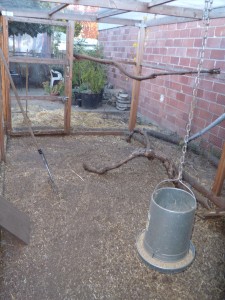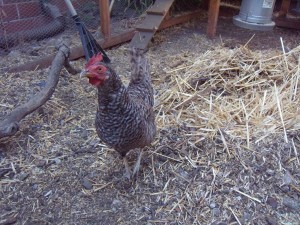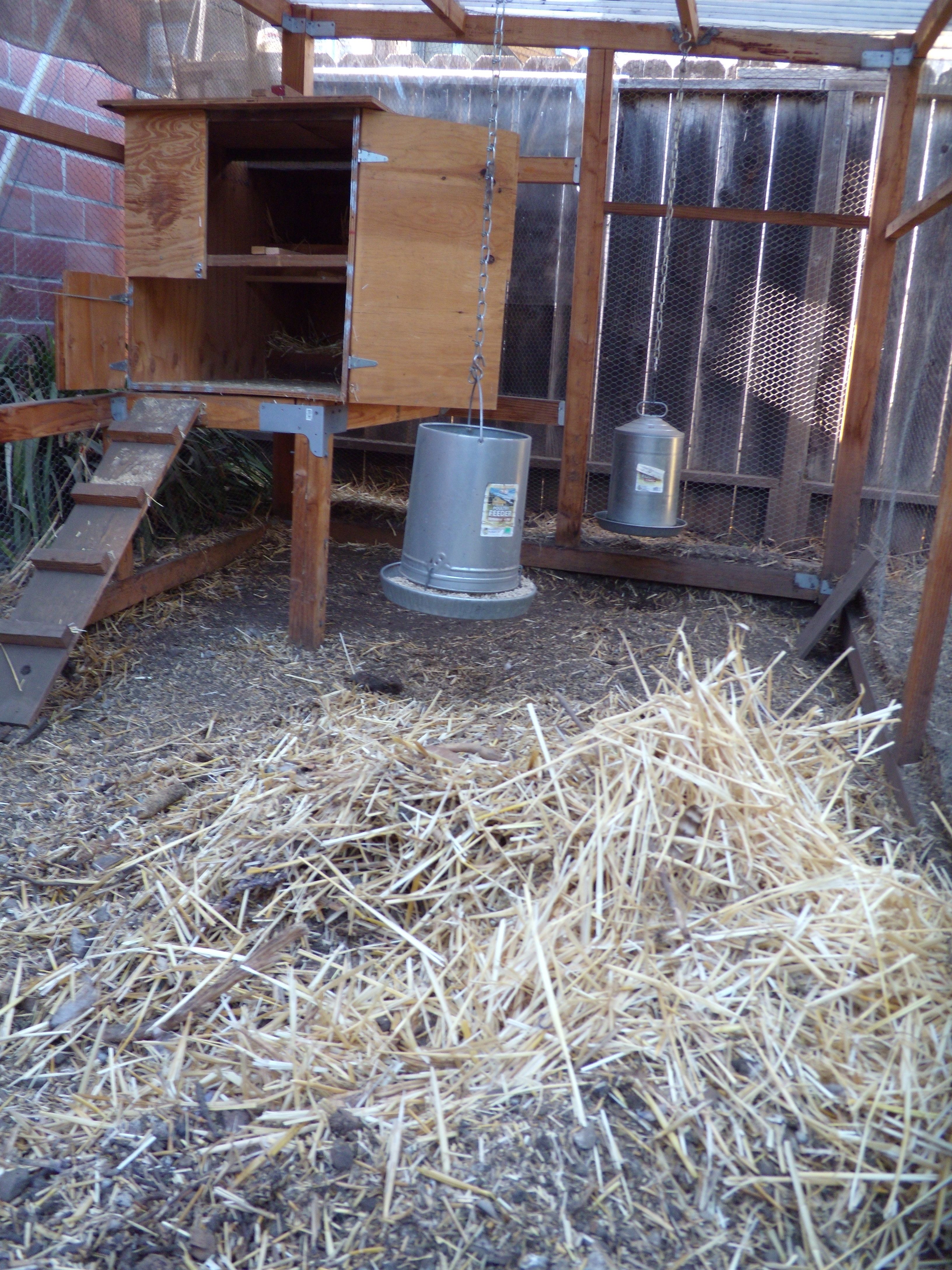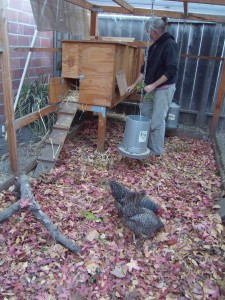I learned a few lessons last year making plum wine for the first time (Plum Wine Results). I’m not sure which is most important, but the number one change I made this year was using ripe fruit. Of course, the plums ripening coincided with my family’s annual get-together, so before I left, I went through boxes of fruit on a daily basis, bagged ripe plums, and stuck them in the freezer, whole.
Juicing the plums
When I finally had time, I thawed the plums overnight in a big plastic crate and began juicing. As I did last year, I juiced by hand, squeezing fruit then tossing it into a fine-mesh nylon bag strapped over a 5-gallon bucket. When the fruit pulp had reached about the size of a soft ball, I held the mesh bag in one hand and squeezed and milked with the other until I felt satisfied with the amount of juice extracted. If you have help, you can wait till the pulp is bigger in mass before squeezing. I was working by myself, and the softball size worked well for my hand size.

Plastic crate to left; juiced plum debris for liqueur in middle; me and my softball-sized bag of squished plums to juice in foreground. I juiced directly into the bucket that I used for my primary fermentation.
Since last year’s plum liqueur was the true star of the season, I didn’t try to squeeze every last ounce of juice out of the pulp. I figured some juice would be useful in this year’s batch of plum liqueur.
Starting the wine
I ultimately produced about 5 gallons of juice. I ended up freezing half a gallon, and used the remaining 4.5 gallons for the wine. I added campden tablets, even though I had frozen the fruit, because the juice sat out for periods in the kitchen. The recommended rate is 1 tablet per gallon of ‘must.’
I have also semi-graduated to wine-speak, mostly so I don’t make an ass out of myself when I go ask questions at the brew shop.
One difference between the process I follow (courtesy of our friend Richard) and recipes I have found online is I use straight juice versus smashing fruit and adding water. It is recommended to allow the must and campden tablet mixture sit at least 24 hours – and no more than 48 – before beginning the process of making wine.
When I was ready to proceed, I added sugar at a ratio of one pound to one gallon of must, again per Richard’s recipe. This time, instead of dissolving before adding, I added straight to the bucket, and stirred and stirred until the sugar was dissolved. After I added and dissolved the sugar, I scooped out some of the must and made my yeast mixture in a pint jar that I had sterilized.
Adding the yeast
Last year I used champagne yeast, and sure enough, my wine had an off-flavor of champagne. So this year, I used EC-1118, also recommended for fruit wines. While it is also a champagne yeast, I thought it might yield a wine a little less dry than the champagne yeast. At least, that’s what the guy at the brew shop lead me to believe.
Once the yeast started taking off, which took about 15-20 minutes, I gently poured it across the surface of the must, as I had read somewhere I should do, then covered my bucket with another mesh bag, bungee-corded in place.
If you want a clear wine, you can also add pectic enzyme. This helps break down the pectin in the juice, so that the resulting liquid is clear versus opaque. I didn’t add pectic enzyme because I’m ok with the opaqueness. It’s not a displeasing murkiness; it’s just opaque, and the color is vibrant. I used Santa Rosa plums, so the color is a rich magenta. If you want to use pectic enzyme, I think the recommended rate is 1 teaspoon per gallon of must.
The primary fermentation
Back to my bucket: I have read tons of talk on brewing and wine-making forums about yeast and oxygen and oxygen and oxidization. Richard’s original recipe had his must and yeast working away for a week or so in a bucket covered with panty-hose before he racked and transferred to a carboy. I did that last year, but this year, I let the bucket sit like this for 48 hours, before securing the lid and air-lock in place. It seemed like a good balance between letting the yeast proliferate in the presence of oxygen and sealing the wine off from oxygen.
As it is, the yeast went nuts before I secured the lid and airlock. I believe this is largely due to the location of the bucket – about 6′ away from the oven – and one 36-hour jam session. The must actually rose all the way to the top of the 6-gallon bucket before collapsing. Yikes. Some forums say the yeast going fast and hard can affect the flavor of the wine, so I am concerned about the eventual flavor. But it is also known that champagne yeasts go hard, so I am keeping my fingers crossed.
After securing the lid and air-lock (my bucket has a pre-drilled hole that fits a #6 or #6.5 rubber stopper, into which an air-lock fits), I left the wine alone for a few days before looking into the bucket via the hole to monitor the activity. I believe it took about 6 days for most of the activity to die down.
First racking
At this point, I racked the wine into my glass carboy, which I had sterilized. I didn’t have a racking cane, which I do now, so I aimed the spigot at a funnel seated in the carboy and lined with a mesh bag, and turned ‘on’ the spigot. The spigot was about 6-8″ away from the funnel to minimize splashing and oxygenation. There was a lot of debris!
Last year’s wine also was not sweet enough, which I did not realize until we had bottled it. So, after racking into the carboy, I added 2.5 more pounds of sugar directly into the carboy. I swirled this around until it was dissolved, then wrapped the carboy with a towel to protect it from light and put it to rest under the dining table.
The secondary fermentation, second racking & first taste test
After a few days, more yeast activity showed. This went on for about a week and a half or two weeks, until the yeast dropped to the bottom of the carboy. I ultimately let the wine sit in the carboy for about a month before racking again. That’s where it stands now.
As I mentioned, last year’s wine was not sweet enough for us. And, after tasting some of this year’s batch during this second racking, I can say it still isn’t sweet enough. This year, however, I know to back-sweeten BEFORE bottling, which is my plan. I think I’ll let the wine sit for awhile before adding sugar, on the off-chance that any yeast might still be present, and hungry.
Always more to learn
Next year, I think I’ll double the sugar ratio, say, two pounds per gallon of must vs. one pound per gallon. I hesitate to make too sweet of a wine, and it’s also possible that the wine, once aged, will be tasty enough as is. The learning curve continues.







